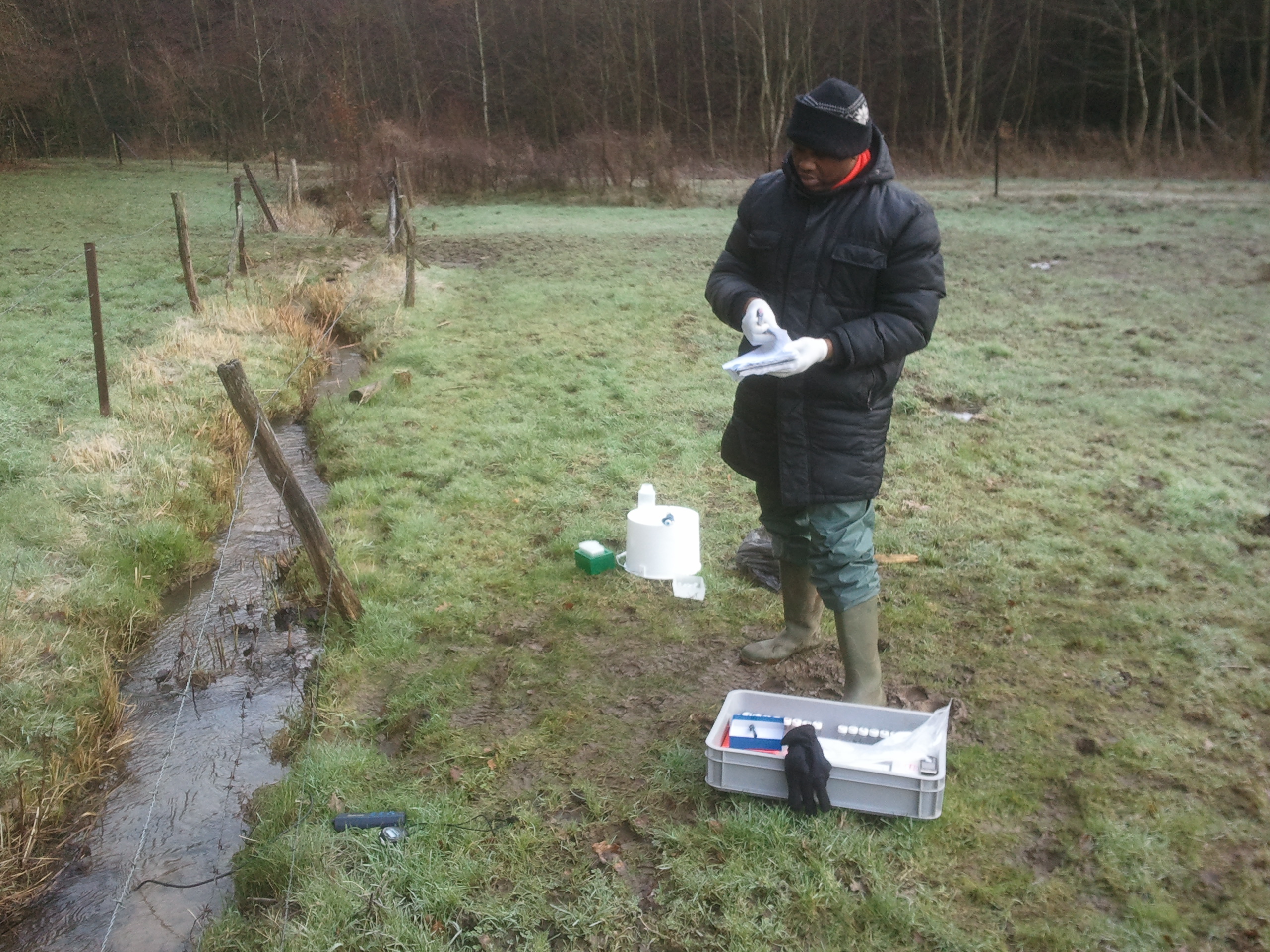Want to understand how water flows through a river catchment? Just throw in some DNA.
Analyzing DNA strands is an activity mostly done by biologists and doctors, but shortly , hydrologists may be using DNA strands too.
Want to understand how water flows through a river catchment? Just throw in some DNA.
Analyzing DNA strands is an activity mostly done by biologists and doctors, but shortly , hydrologists may be using DNA strands too.
Not to find out what kind of microorganisms live in the water, but to gain better understanding of the interplay between ground water and surface water.
Or so says Dr. Thom Bogaard (CEG faculty) who works together with Dr. Jan Willem Foppen of UNESCO-IHE Institute for Water Education in Delft on a technique involving short single strands of synthetic DNA (80 nucleotides long) that function as tracers in water streams.
Tracer testing is a method widely used to map water systems. It usually involves the use of environmental isotopes like 18O and 2H or the injection of fluorescent dyes or several different kinds of salts in streams. The concentrations of the chemicals later measured downstream give insight in flow velocities and in the interactions between groundwater and surface water. It has proven valuable for understanding small catchment areas, but a lot less so to do research on large water systems.
For that latter purpose the chemicals get diluted too quickly. “DNA on the other hand can be detected in extremely low concentrations”, says the Delft researcher.
Last year Bogaard and his colleagues injected DNA in little streams (just a few nanomol) in the south of the Netherlands, Belgium and Luxemburg to see if they could find traces back hundreds of meters downstream. The findings seem promising and were recently published in Water Resource Research. Since minute concentrations of DNA can be traced with the quantitative polymerase chain reaction, the research area could easily be scaled up.
With the development of DNA tracer testing hydrologists will not be dependent on catastrophes anymore to do their work, Bogaard believes. Because of the dilution problem of traditional tracers hydrologists have often taken advantage of ecological disasters to map water systems, such as the leaking of huge amounts of chemicals in a river or nuclear air pollution like the nuclear bomb testing in the fifties (Tritium)or the 1986 Chernobyl explosion (Cs-137).
Another advantage of the DNA is the fact that you can perform multi-tracer experiments with it. The number of tracers is almost unlimited. To make different tracers you simple change one or more of the nucleotides in the DNA strand. The idea is then to inject each type of strand at a different location, in different tributaries of a large river for instance. The whole water system may be deduced from the timing and quantities of different DNA strands found downstream.
But first, the researchers will have to improve the technique. At the trials, they found that the DNA mass was reduced only a few meters downstream of the injection site by 45 to 97%. This, they think, is most likely as a result of chemistry of the river in which the DNA strand is injected. Whatever the cause, they will have to find a way around the swift reduction before they can tackle larger water systems.
J.W. Foppen et., al. Development of a methodology for the application of synthetic DNA in stream tracer injection experiments. Water Resource Research, 18 July 2013

Comments are closed.